DAISY PARRIS - THE PUNK PAINTER
Daisy Parris talks about the art scene in Chatham, how music has influenced Their work and how it feels to exhibit in New York
The creative worlds of music and art have an extended history of collision with the likes of Ronnie Wood, David Bowie and John Squire successfully exchanging the guitar for the paintbrush.
Likewise, the melodic subgenres of popular culture that have shaped our nation have long influenced the canvases of our greatest artists. None more so than the punk era, where hand-drawn political and social sketches were the focus of gig posters.
And it would seem that the connection lives on.
Hailing from Chatham, artist Daisy Parris is currently exhibiting in New York and Sweden, but much of their work would not look out of place in the screaming punk fanzines of the late 70s. Stood in boots, jeans and lumberjack shirt in a converted (but still battered) railway arch in south London, Daisy says: “My parents were punks, so I have got a lot of the musical influence from them.
“Somehow punk does worm its way in. Seeing pictures of my dad as a punk living in Catford, and living in south London now, I am seeing a lot of the steps that my parents used to go through and gigs and venues they used to go to.
“I am listening to The Clash a lot at the moment, but love The Buzzcocks, too.”
Though their studio in Herne Hill takes the brunt of the paint splashes these days, Parris attributes their style to early influences back in Kent.
“Music was always a big influence for me,” says Daisy. “I used to go and see bands every weekend, and I would see that a lot of them were artists, too. They would be doing, music, writing, painting... everything.
“So I used to paint portraits of all the people around me in that art and music scene.
Portraiture was where it began. I’ve let that go for now, but I might bring it back again.
“When I finally realised I could paint more than portraits, that’s when the words and abstract imagery came into it. The words tend to dominate now.”
In previous interviews, Daisy has stated a battle with anxiety and inner thoughts contributes to the work. To be honest, it is displayed for everyone to see, with pieces emblazoned with phrases such as “sorrying”, “smash my head in”, “Ugly Bitch Club” and “can everyone cope”, central to the works.
The notion that is alright to be struggling to express your emotions, and be honest about it leads to colourful yet dark expression on the canvas – a dark mass surrounded by striking yellow forms the piece adorned with “Anxiety of the Month”.
“I find it from everything happening around me. People. Noise,” Daisy says.
“I guess collecting imagery and words adds to it. If I see blood somewhere, I take a photo of it and document it. It’s really horrible and really aggressive to see that walking to work. But I use it.”
COLLABORATIONS
Moving from the Fort Pitt Grammar School in Chatham to the University for the Creative Arts in Rochester was a logical step having developed a love of art as a teenager.
“Even back then, there was something inside me that made me obsessed with art,” they explain. “I would go home from school and paint for five hours every day.
“In a lot of ways, that time painting at home by myself was more valuable than learning at school or university. In that private moment, you can make the true work that you want to make.”
Some of Daisy’s latest work comes in the form of a collaboration with artist, friend and lead guitarist of punk band Slaves, Laurie Vincent.
Having met Vincent at UCA, the pair got back in touch this year to mash their artistic talent together.
“I hadn’t seen him in a few years, but we had both been painting and stuck to our styles,” explains Parris. “He got in contact and asked if I wanted to get a studio together. We ended up in this tiny studio in Lewisham, and it went from there. “I think we subconsciously influence each other on our work. He would use yellow, so I would end up thinking about using yellow.”
Vincent has gained notoriety in the intervening years with Slaves, who toured America in late 2017 following huge acclaim in the UK. But his artistic style remains parallel to Daisy’s own.
“I have known his work for ages, and he has known mine,” she says. “Collaborations are nice because I know if I mess up he can fix it. It takes the pressure off painting. There is a conversation and a dialogue happening and we are trying to take risks.
“We both understand what is enough and we can enhance each others’ steps without worrying. He has painted that bit, and then I add something else. It is trust.”
Now in their mid-20s, Daisy looks back fondly on her early exhibitions in Chatham, and remains steadfast in her compliments for Medway’s art scene.
“Whenever I am stuck, I always think about the art in Kent because it was there and that scene which started me off,” Daisy explains.
“I think it is because Chatham can be so dead-end and depressing. I suppose art and music is what people have got there. There is definitely something there that pushes people to express.”
A five-month residency at the Art School Alliance in Germany’s street art capital Hamburg, as well as group exhibitions across London, has seen Daisy’s stock rise considerably.
It all sounds beautifully retro, like how people progressed their artistic careers in the old days, bit-by-bit, show-by-show. But this is the teenies, and fortunately there are, of course, significantly more tools to get your work into the public domain.
“People have seen my work on Instagram and got in contact; it has definitely helped,” says Daisy. “I have met so many people from it, and there is such a good community on there, too. A lot of my opportunities have come from people contacting me on there.”
Some 7,000 followers means her work reaches a considerable audience as soon as Daisy feels it worthy of a post.
“There are ways you can work it to your advantage and build up this energy,” Daisy says. “Once you get some energy going, it attracts more. Instagram is a really good tool for building momentum.” Though music and the modern world are continually impacting her work, strong artistic influences are name-checked by Daisy.
“I went to see some Tom Howse works at Rod Barton (art gallery) recently, and it was so good,” Daisy says. “His paintings are huge and that is making me want to go bigger with mine. Seeing the effect big work has on people is amazing.
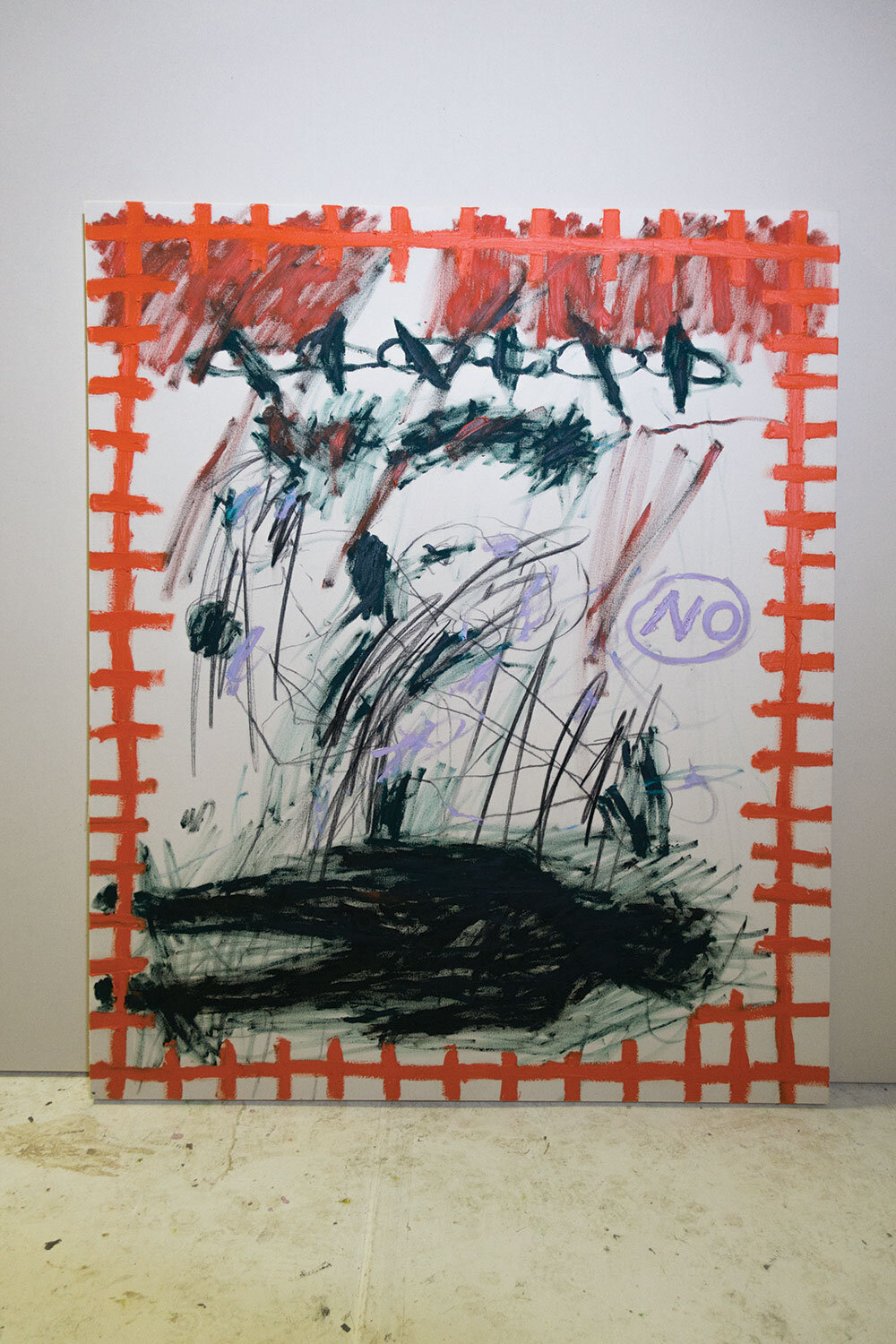
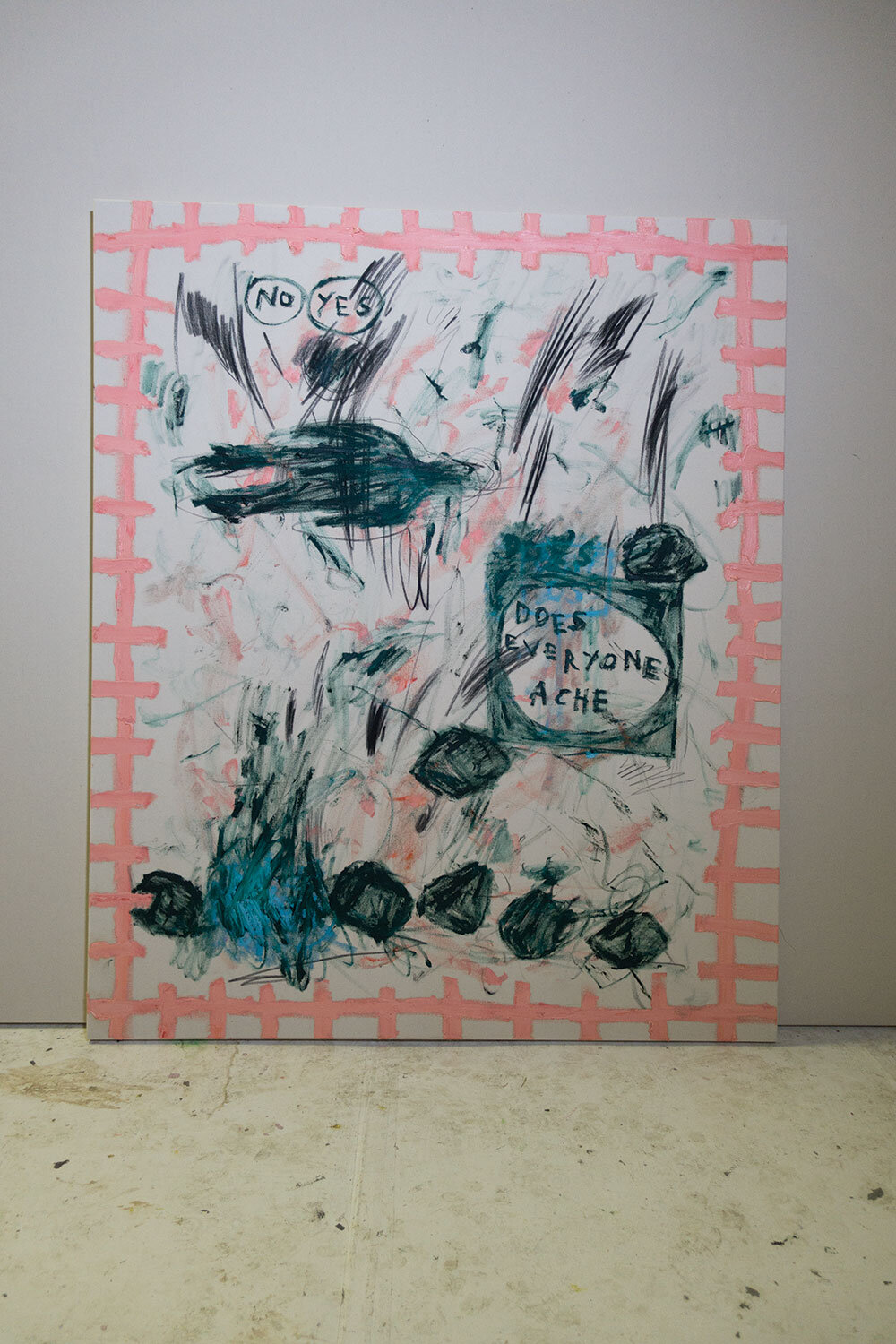

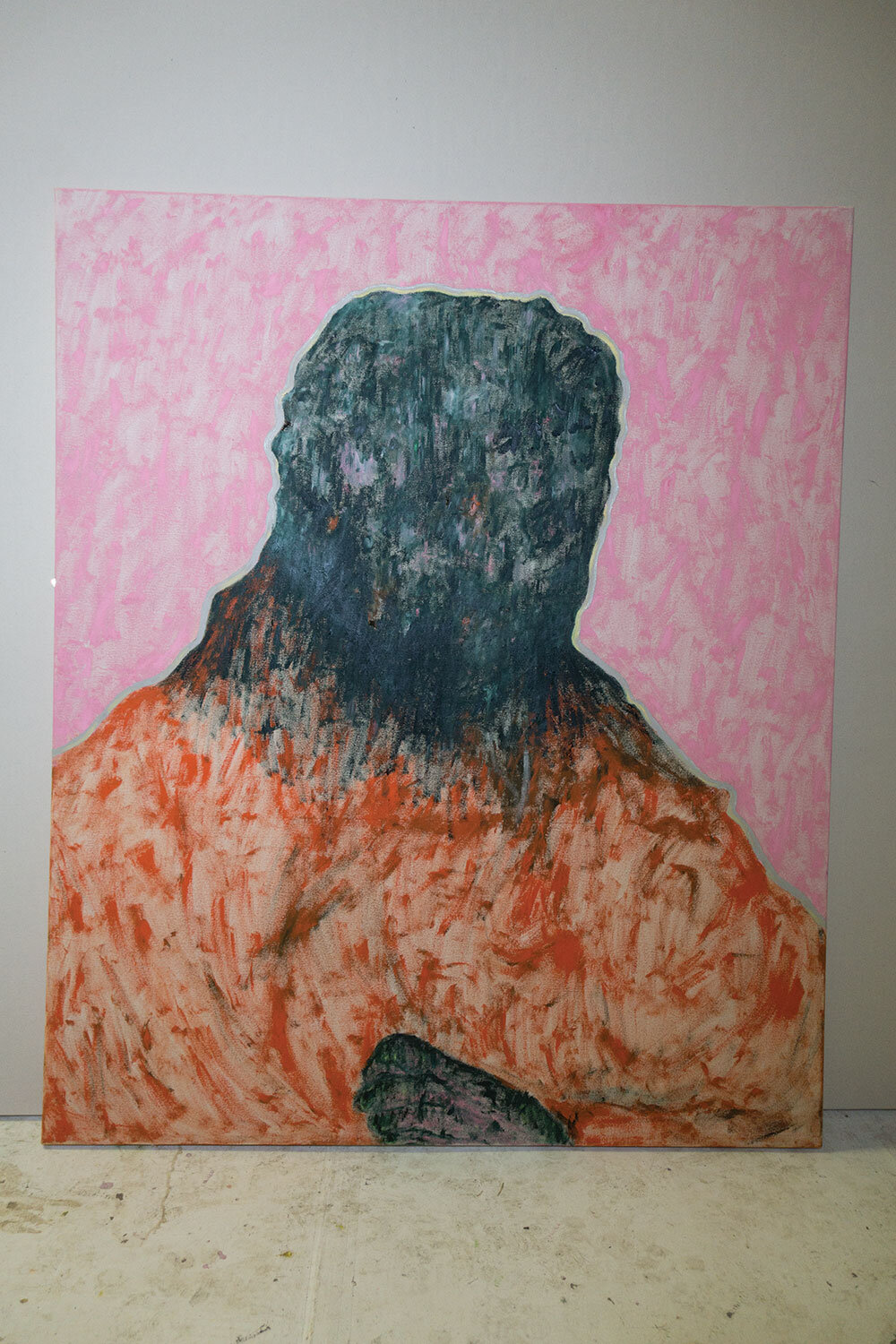
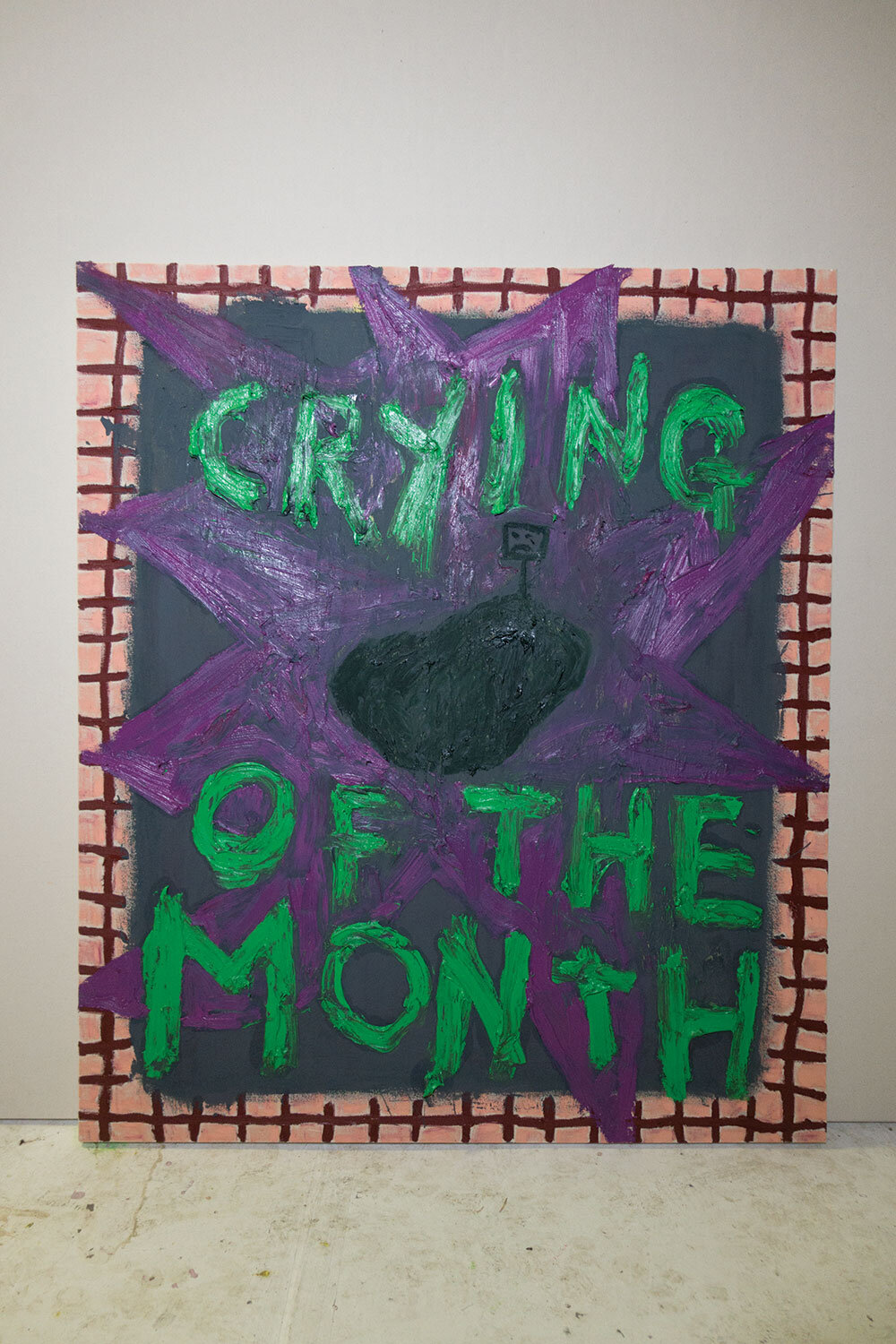
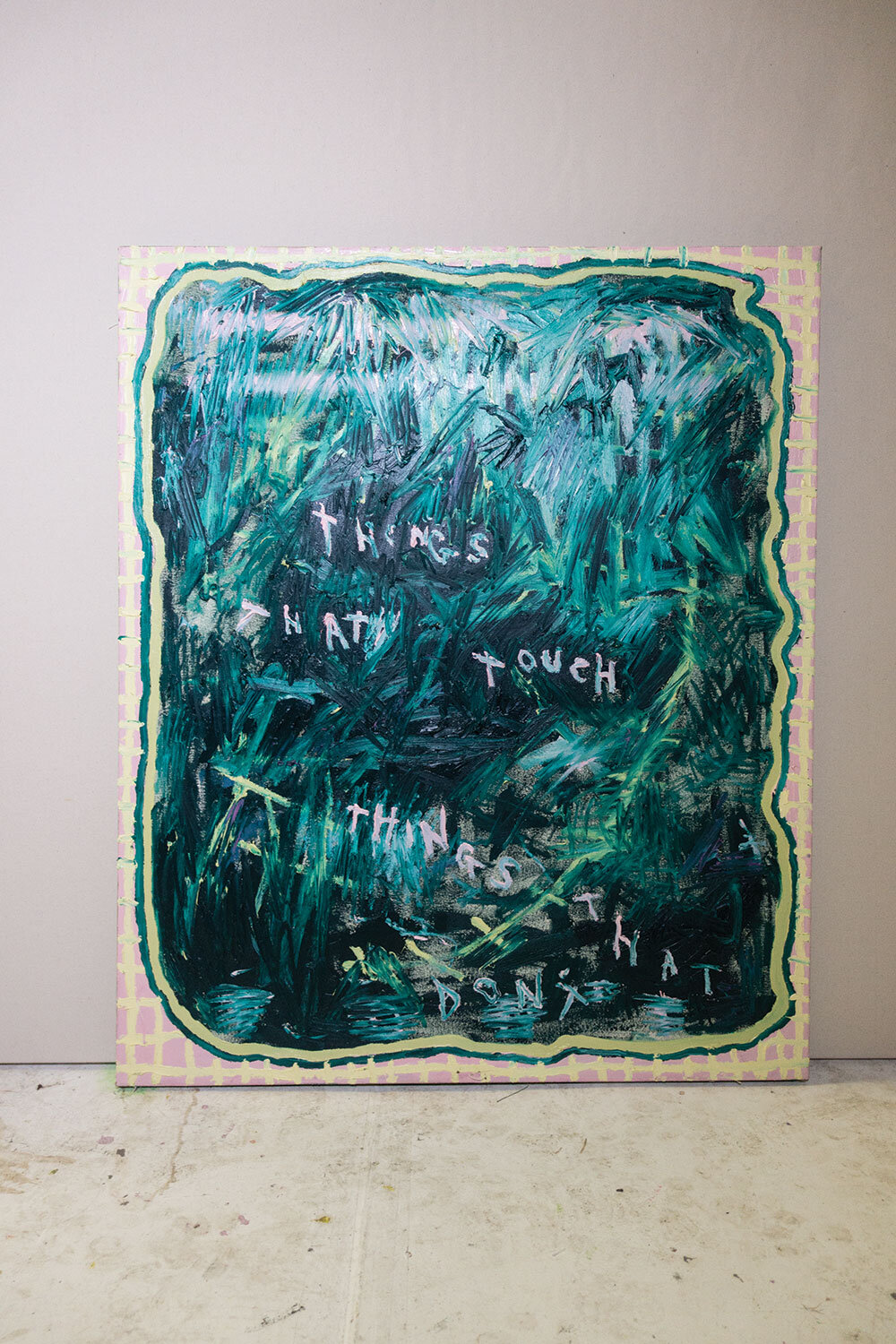
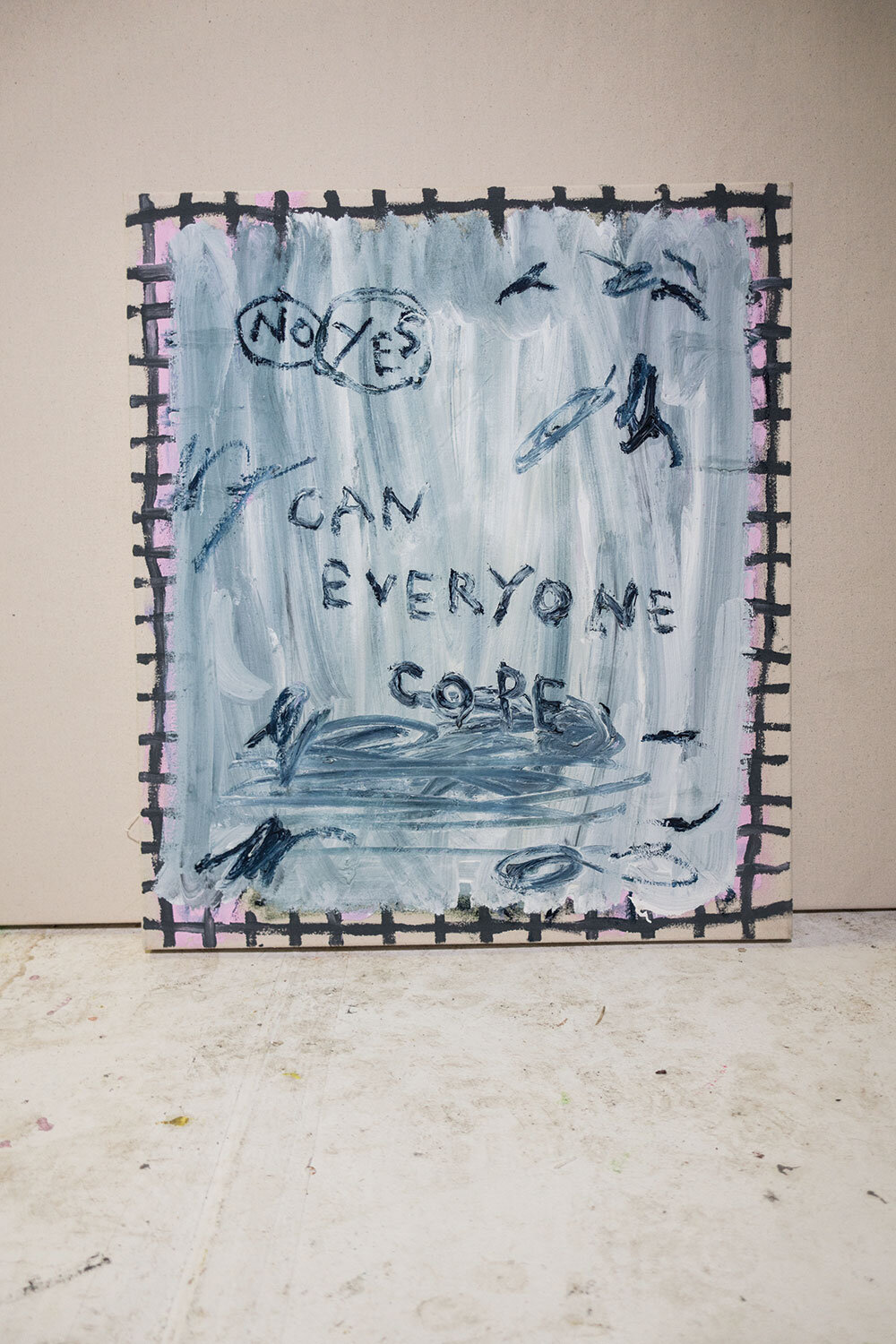
“My other favourite is Blinky Palermo. He is completely minimalist and abstract, but I love his colours. And Frances Bacon is obviously another absolute favourite.”
Moving pieces of work around the studio in preparation for the ‘cene magazine photoshoot, it is easy to see that there are clear favourites – perhaps even lifted and placed back down more carefully than the rest.
There is raw emotion in all Daisy’s art, switching between punky irritation and quiet self-contemplation.
But that connection to the canvas means that receiving a request to exhibit work across the globe is slightly bittersweet.
“Basically, if I am exhibiting, then it is all up for sale,” they say. “And that’s great, but there are some pieces that I really don’t want to sell because I am really sentimental about them.”
The rumble of the next train overhead breaks the moment’s pause for thought and we go back to talking about The Clash.



